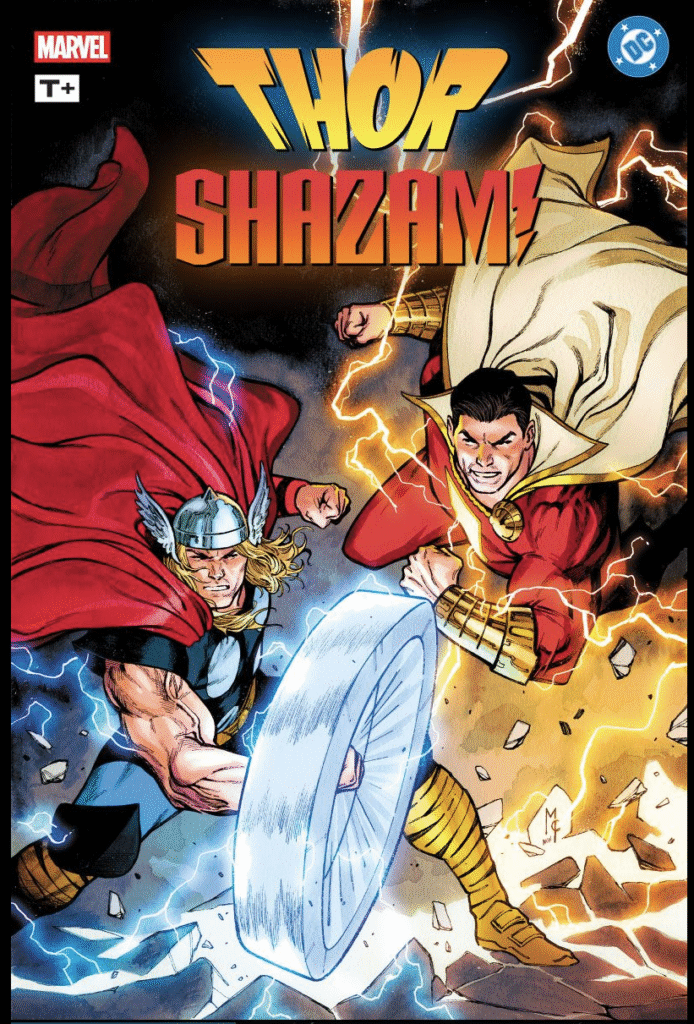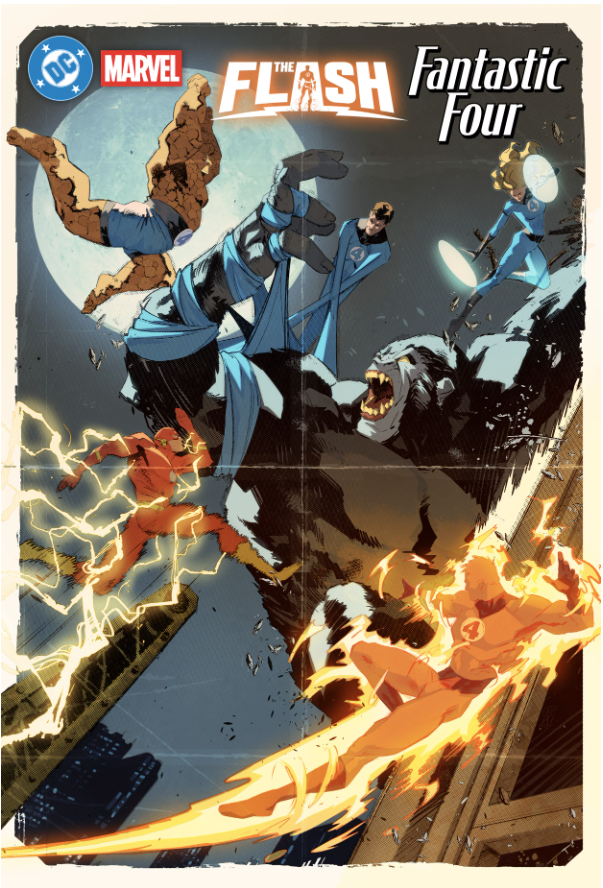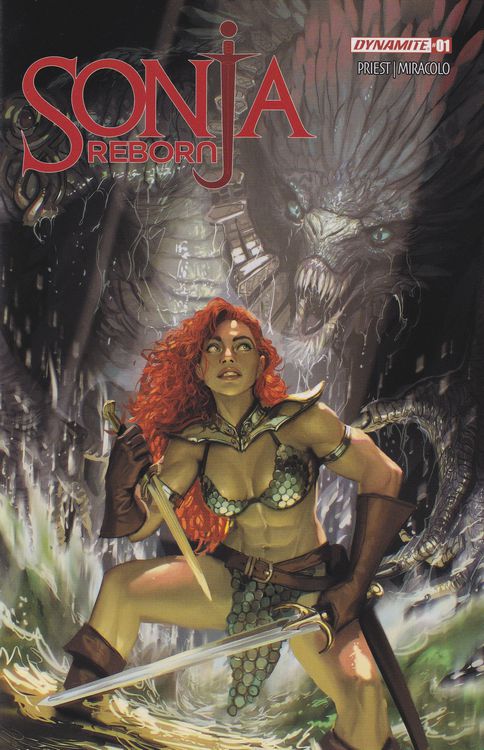Unbagging Titans Vol. 4 Annual
Titans, Vol. 4 Annual
#1B

Daniel Sampere Variant
| Release: | Jul 30, 2025 |

Creators
| Writer | Phil Jiménez |
| Artist | Phil Jiménez |
| Cover Artist | Daniel Sampere |
| Cover Colorist | Tomeu Morey |
| Colorist | Arif Prianto |
| Letterer | Wes Abbott |
| Editor | Andrea Shea |
| Editor in Chief | Marie Javins |
That’s not how love works here.
Donna Troy shouldn’t exist.
I don’t say this as a knock against her – she’s one of my favorite characters and I have been known to often state that she is the best.
Rather, I mean that she wasn’t really created with intent in the same way that her sister Wonder Woman was. She’s not a character who had a straightforward introduction that included an origin story. She was not Donna Troy when she first appeared and would not become Donna Troy until she’d been around for years, and beyond that, the character who eventually became Donna Troy didn’t actually exist.
The character who would go on to be known as Donna Troy debuted as Wonder Girl in Wonder Woman’s book. She was meant to be a version of Wonder Woman as a young teen. Wonder Girl was to Wonder Woman as the original Superboy was to Superman.
But it wasn’t really that straightforward, as Wonder Girl – along with an even younger version of Diana referred to as Wonder Tot – appeared in stories alongside Wonder Woman. How was this possible? It wasn’t, which is why those stories were called “Impossible Stories.”
Eventually, those stories came to an end and Wonder Girl (and Wonder Tot) were locked away in a vault and mostly forgotten about until the creation of a new team of young heroes called the Teen Titans. The Titans were a kind of Junior Justice League, consisting of the teen sidekicks of the adult heroes.
But that made the team a bit of a sausage party, as there was no girl sidekick available to join their ranks.
Or was there? Dim recollections of stories featuring a Wonder Girl who had adventures with Wonder Woman offered a solution, and thus, Wonder Girl joined the team and became a real character rather than an imaginary one. (Yes, I know they’re all imaginary, but you know what I mean.)
Throughout her earliest adventures with the boys, Wonder Girl was called many names – mostly Wonder Gal or Wonder Chick, in the “hip” teen lingo of the times – but was never shown to have any sort of civilian identity.
Because she didn’t exist. And readers – especially older readers who’d read the Impossible Stories – noticed.
Thus, Wonder Girl was given a name and backstory. She was Donna Troy, an orphaned child who was rescued from a burning building by Wonder Woman who brought her back to Paradise Island where the Amazons used their super-science to imbue the mortal child with the powers of an Amazon and she was raised as Wonder Woman’s younger sister.
Problem solved!
Except, not really. The timing didn’t work; at that point in DC continuity, Wonder Woman had not been active in Man’s World to have saved a baby who was now a teenager.
There was some hemming and hawing about that, but no one worried about it too much, but it became an unavoidable issue after Crisis on Infinite Earths changed Wonder Woman’s history even further, with Diana not making her debut in Man’s World until years after Donna had already been active as Wonder Girl.
Indeed, the new version of Diana was roughly the same age as Donna.
Since that time, many, many new origins and explanations for Donna have been tried, though in recent years it’s been less of a concern, given the freeform, anything goes approach to continuity DC has taken in which anything and everything is true depending on what the story needs.
Still, there is currently an ongoing fool’s errand attempting to write a new, somewhat coherent and consistent History of the DC Universe, and that seems to have inspired the issue that is the subject of today’s Unbagging. (Well, that and the fact that, like me, Phil Jiménez thinks that Donna is the best.)
I missed this issue when it originally came out, as I stopped picking up the regular Titans book a while ago, but I saw some effusive praise online for the story written and illustrated by Jiménez – who recently took home an Eisner Award for his DC Pride 2024 short story – so I snagged the last copy of it on my most recent trip to the comic shop.
I’m glad I did.
Back in the ’80s, shortly before the Crisis, there was an excellent issue of The New Teen Titans – a standout issue in a standout series – titled “Who is Donna Troy?” The story retold Donna’s origin, with a framing sequence involving Dick Grayson trying to answer that question for Donna, investigating the circumstances that led her to be in the burning building where Wonder Woman found her and to find out who she was before the Amazons took her in.
That story clearly inspired this one, and, indeed, even makes something of an appearance with an homage to that issue’s cover.

In that original story, Dick found that her name really was Donna, located the name of her late mother, and found her another family in the form of a woman who had briefly adopted her before losing custody after her husband died.
This story follows the same basic origin as that original “Who is Donna Troy?” story, eschewing the later attempts at making Donna’s story make sense, as the new history of the DC Universe allows for Wonder Woman to have been active when Donna was a child and for the Amazons to be presented as being technologically advanced.
It differs a bit in terms of when and how Donna is imbued with Amazonian powers – rather than every Amazon donating a portion of her strength shortly after her arrival, she instead gets only a share of Diana’s shortly before she is allowed to leave Paradise to join her sister in Man’s World – but for the most part, it remains the same.
The framing for this story is Donna attempting to connect with her father, someone who was never found in the original story, and she tells us her story – as seen in the image above in which she talks about her love for her “brother” – in the form of her thoughts about what she will say to him when they meet.
Along the way, we get little vignettes of her life on Paradise Island as well as pivotal moments in her life with her friends in the Titans.
Like this one.

Throughout it all we see images of a young child who almost seems to be haunting her memories, which reflects a part of Donna’s history I’m not overly familiar with: the loss of her son.
We see mercifully little of her ex-husband Terry Long – we actually don’t see him at all – though her relationship with him does cast a *ahem* long shadow over her memories.
Terry had tried to keep Donna’s son away from her after their split, and then a car accident took both Terry and their son of her life forever. It’s a significant trauma that she is attempting to work through and only able to do once she finally decides to meet her father after he reaches out to her.
I won’t spoil that part of the story, but I will say that the meeting doesn’t go as she expects, but it does still result in Donna doing what she does best: finding family.
Much of the story also focuses on romance, because how could it not? Back in her old “Wonder Chick” days, there was no one more eager to find love than Donna, who was pretty much the horniest girl you’ve ever met in your life.

We see some of her failed romances beyond her marriage, including the one with Speedy, and also see her passing the time swiping through a dating app.
And ultimately, and appropriately, for Donna’s part of the story, at least, we end on a date.

When I was in line at the comic shop, with this at the top of my stack, one of other regulars took note of it and let me know that he thought that this was the best single issue he’s read all year and that, given that we’re of…similar vintage and both enjoyed The New Teen Titans back in the day, he was certain I was going to enjoy it.
He was right; I really liked this story, and it serves as a perfect follow up to the story – and answer to the question – “Who is Donna Troy?”
It also goes a long way towards explaining why it is I say that Donna is the best.
I’m glad that there is finally a way for Donna to fit into the DC Universe that actually makes sense and can maintain the best parts of the various attempts to make her fit.
The story – titled “Limitless” – is beautifully written and beautifully illustrated with the kind of densely packed and ornately detailed pages that are something of a Jiménez trademark.
A love for Donna that is equal to or greater than his love for her big sister is another Jiménez trademark, and that love shines through in the telling, as does his reverence for the work of Wolfman and Pérez, who have a cameo in the story.

Donna hasn’t gone by Wonder Girl in a long time and no longer goes by any kind of code name.
As she says in the end, she’s Donna.
Why would she ever need to be more than that?
If you want to know more about “Impossible Stories,” check out this video from Casually Comics.
As always, special thanks go out to my comic shop, Comic Logic Books & Artwork. Please remember to support your local comic shop, and if you need to find one, click here.

Born and raised in the sparsely populated Upper Peninsula of Michigan, Jon Maki developed an enduring love for comics at an early age.


